04 Sep 2024 - {{hitsCtrl.values.hits}}
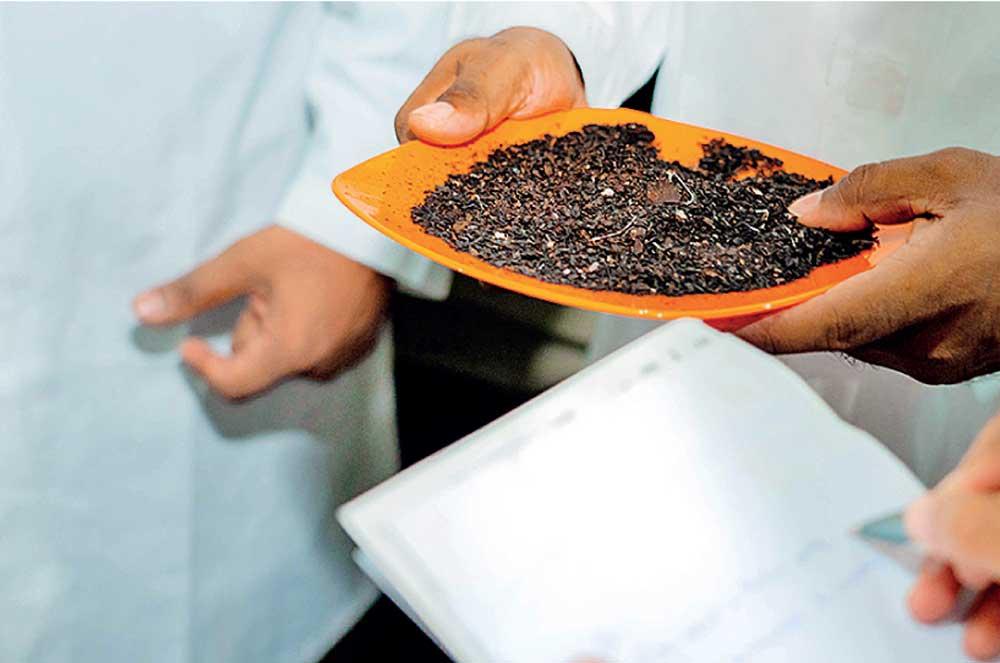
The whole leaf tea blending undergoes multiple stages of cleaning to remove impurities, including metal particles, plant fibres and even dust tea.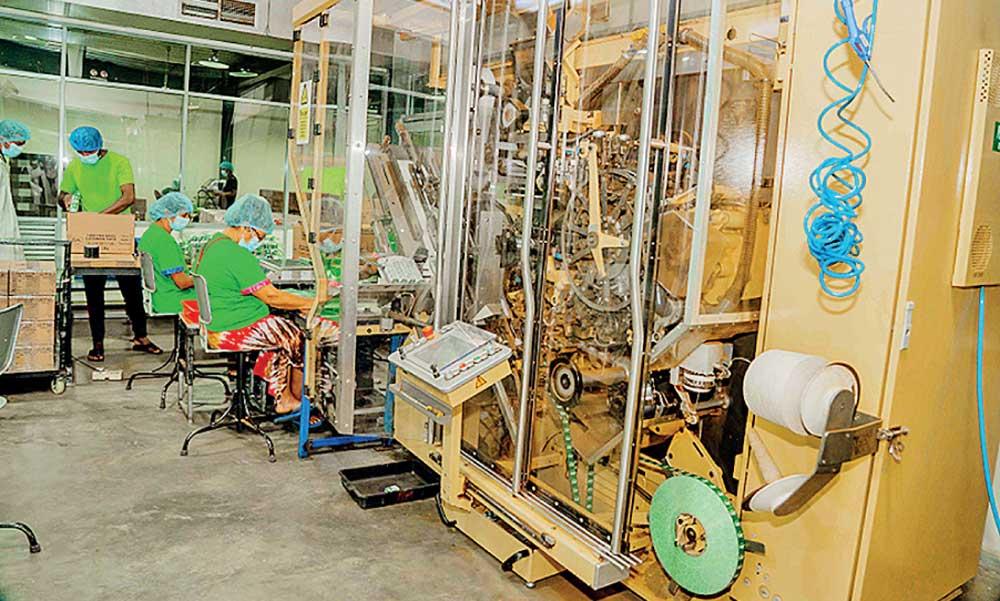
The section for tea bag production was observed to be primarily staffed with women.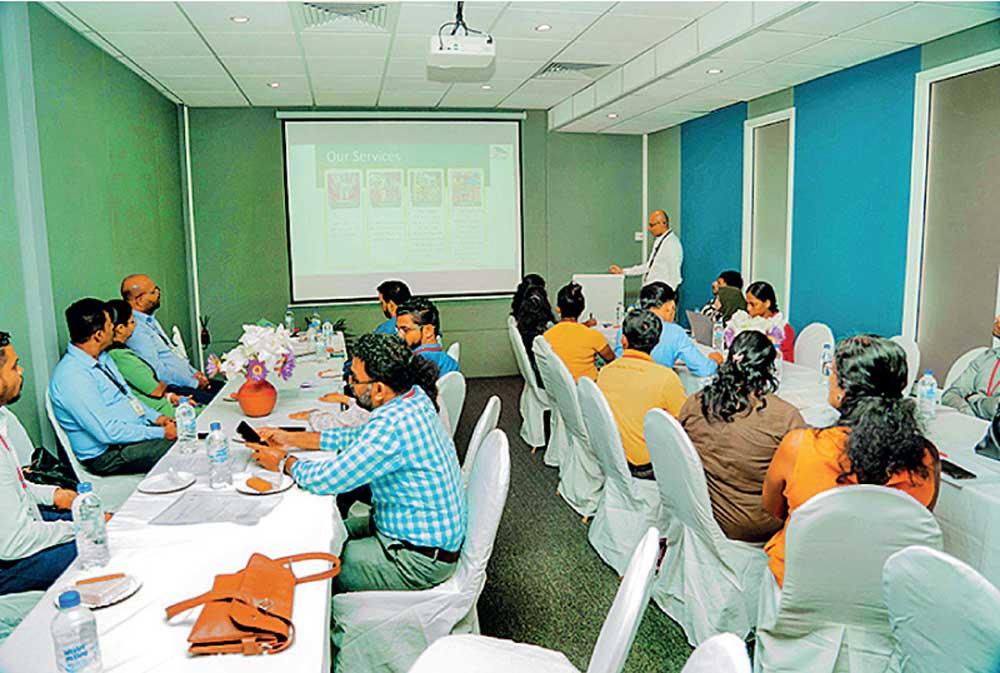
Sunshine Tea CEO Sanjeeva Saranapala presented the introductory remarks. 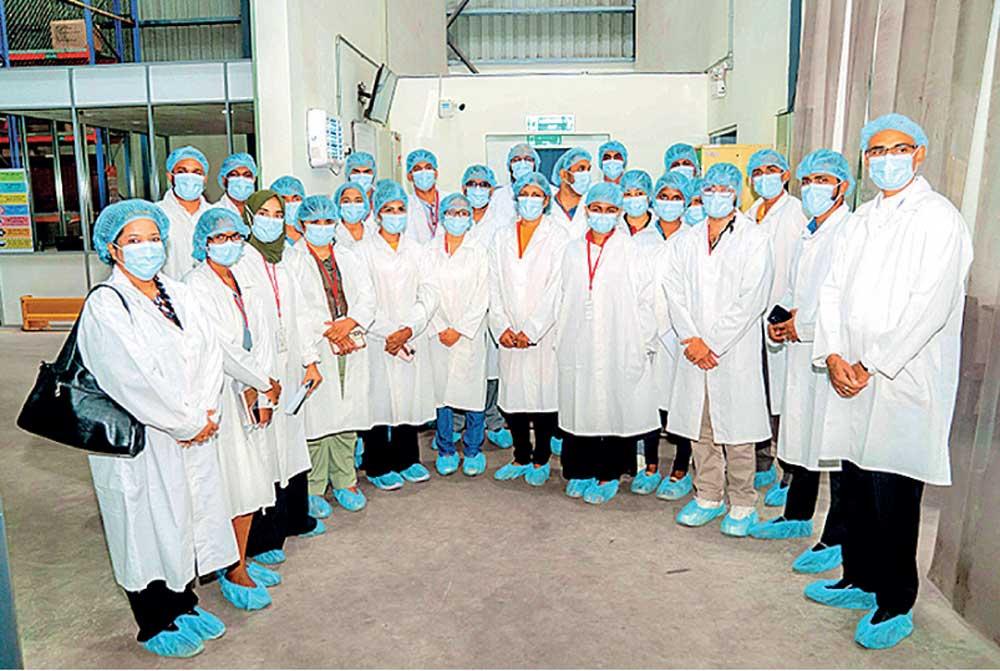
The visitors were required to adhere to strict hygiene protocols.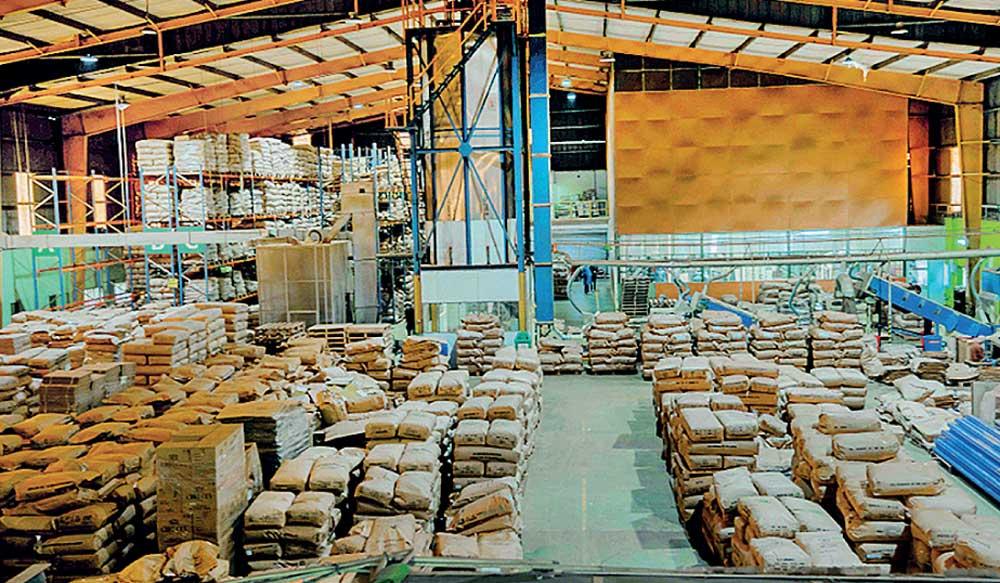
The facility was divided into two main sections, a warehouse and a production area.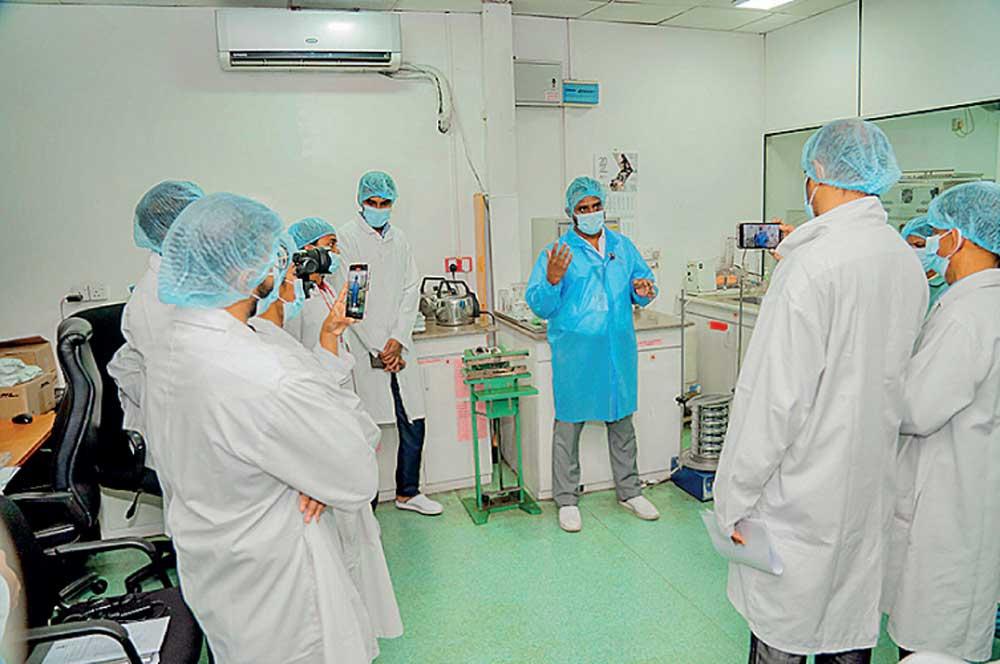
The control department oversees all quality assurance functions, running two in-house labs, where both macroscopic and microscopic investigations of the tea are conducted.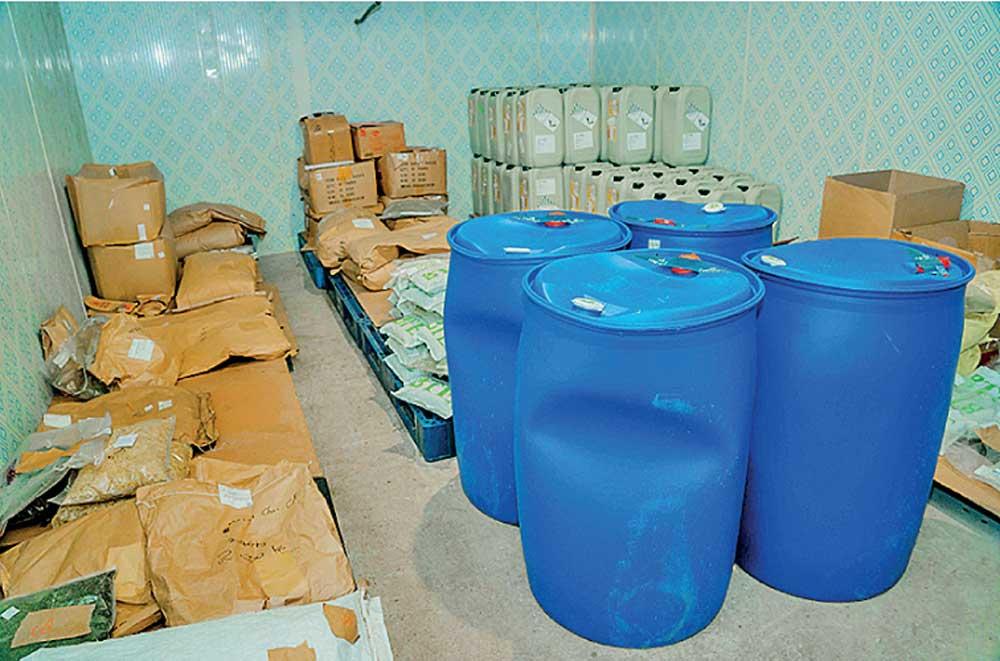
The flavour room stores flavours in containers in a room maintained at a temperature of 18 degrees Celsius.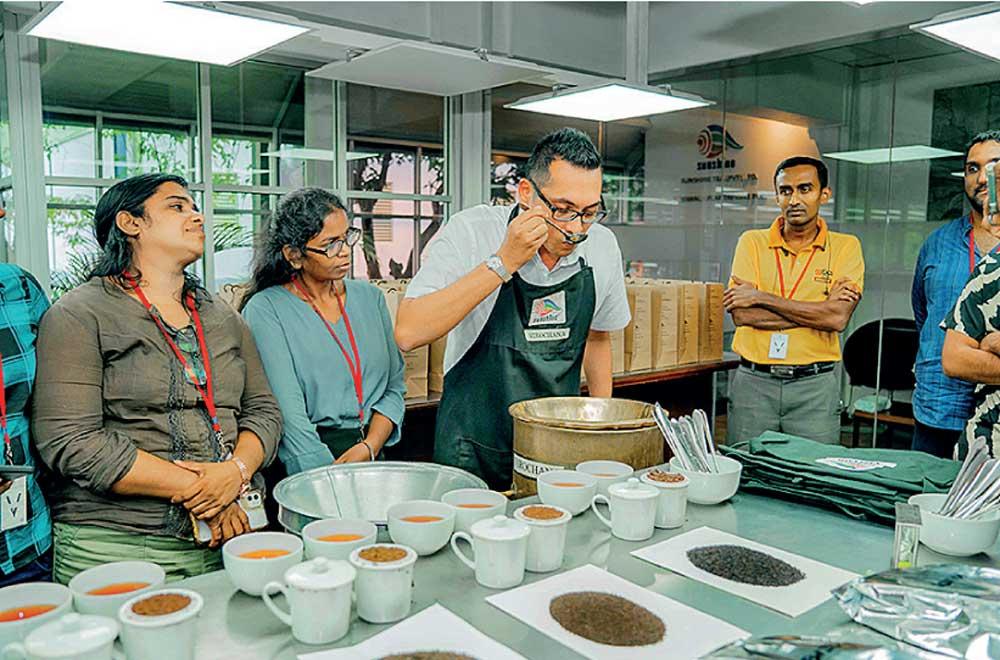
The tea-tasting session featured a wide range of flavours and tea varieties, including tea from the seven distinct tea growing regions in Sri Lanka
 Rooted in the lush landscapes and green hills of Sri Lanka, the Ceylon Tea brand stands as a legacy that solidifies the island’s global reputation as one of the world’s finest tea producers.
Rooted in the lush landscapes and green hills of Sri Lanka, the Ceylon Tea brand stands as a legacy that solidifies the island’s global reputation as one of the world’s finest tea producers.
At the forefront of carrying this legacy forward is Sunshine Tea (Pvt.) Ltd, a prominent player under Sunshine Holdings, one of Sri Lanka’s powerhouse conglomerates.
The Daily Mirror was recently invited to an in-depth media tour of the company’s tea factory located in Kelaniya, offering a detailed look at the precise processes in producing some of the nation’s finest teas. Since its inception in 1987, the company has evolved into a leading tea exporter for Sri Lanka and a key player in the local market, accounting for almost 30 percent of the domestic consumer share.
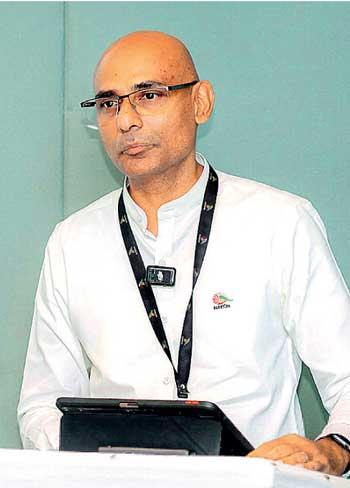 |
| Sunshine Tea CEO Sanjeeva Saranapala |
Factory tour
The media tour commenced with the introductory remarks of Sunshine Tea CEO Sanjeeva Saranapala, who highlighted the company’s expansive portfolio. Sunshine Tea is a company equipped with over 300 employees, 25 percent representing a female workforce, who contribute to an annual turnover exceeding US $ 25 million.
The company boasts a global reach of over 40 countries, offering more than 200 types of Ceylon Tea, tailored to diverse markets across Europe, the US, Middle East and Asia. Flagship brands include Zesta, Teazup, Watawala, Avan Tea and Gordon Frazer.
The factory tour started at the manufacturing plant, which has an annual processing capacity of over 11 million kilogrammes. Upon entering, the visitors were required to adhere to strict hygiene protocols. A strong aroma of tea filled the air as we entered the processing plant. The facility was divided into two main sections, a warehouse and a production area.
Production process
The production process at the tea factory begins with the tea purchased from the local auctions, first unloaded and stored in the warehouse three days before processing. This time is necessary for the sampling and approval process as the batch of tea has to undergo several ISO-standard quality tests. Positioned at the entrance of the plant is a display unit, which briefs the staff about the 13-week production and capacity plan.
The plan includes information regarding client requirements, loading guides and production schedules. The loading guide specifies which orders are to be shipped, their destinations and the items that should be included in the containers.
The factory operates on the 5M method– Material, Man, Method, Machine and Measurement, in an effort to meet client specifications optimally.
Tea blending, flavoured tea and control department
The processing plant is equipped with two blending machines to process blended tea. Overall, the factory has a monthly capacity of producing 902,000 kilogrammes of the beverage. To minimise human contamination, dust tea blends were not observed by the visitors but the whole leaf tea blending process showcased that the tea undergoes multiple stages of cleaning to remove impurities, including metal particles, plant fibres and even dust tea.
A blend sheet instructs the constituents and proportions outlined by the client himself for each tea blend. The vertical blending machine handles batches up to 1,500 kilogrammes with each batch occupying 25 minutes of production time.
The entire process is rigorously monitored, starting with a proportionate sample for the batch of tea first approved by the company’s tea taster, trader and marketer. Mass production of the blend then begins with consistent sampling and testing at each stage, both before and after blending, every two hours.
The control department oversees all quality assurance functions, running two in-house labs, where both macroscopic and microscopic investigations of the produced tea are conducted. These in-house labs testing facilities are crucial in meeting the varying quality standards and regulations enforced by different countries in exporting tea.
The tests include proximate analysis to assess factors such as moisture content, ash levels, etc. and microbiological screenings for Escherichia coli (E. coli) a harmful bacterial contamination in tea that makes it unsafe for consumption.
The department is audited weekly and is mandated to store retention samples of each blend for at least six months to address any potential client complaints.
Located right below the control department is the flavour room where various flavours such as vanilla, cardamom and oil of bergamot, etc. are stored in containers in a storage space maintained at a temperature of 18 degrees Celsius. These flavours are imported from countries such as Germany and the UK along with Sunshine’s own flavours. Adjacent to the flavour storage is the herb room where spices such as ginger for herbal tea production are stored.
Tea bag production
Sunshine’s tea factory is equipped with five Pre-Tea (PT) machines that produce 1.5 million tea bags daily, amounting to a 501 million annual capacity. The section was observed to be primarily staffed with women, who were seen manually packaging the tea bags into packs. The packaging process is strictly monitored, especially for export brands, where even minor damages were rejected and repacked. Each finished product contained an efficient traceability code system developed by the company, allowing consumers to trace the tea back to its original plantation.
The factory also includes facilities for gift packaging with a packaging capacity of 15,000 kilogrammes.
Moreover, the plant is equipped with two loose tea packaging lines, constituting to a monthly capacity of 163,800 kilogrammes. These lines can produce up to 3.9 million packages annually.
Tea tasting session
The eve of the tour kicked off with a tea-tasting session, offering visitors a sensory journey through a wide range of flavours and tea varieties, including tea from seven distinct tea growing regions in Sri Lanka, which are Nuwara Eliya, Uva, Dimbula, Kandy, Ruhuna, Sabaragamuwa and Uda Pussellawa. The session highlighted the unique flavour of each region such as the floral nature of high-grown teas compared to the full-bodied strength of low-grown teas.
The other varieties of tea included LG/OPI, LG/OPABOP, BOPF, dust tea, silver tips, white tea, green tea, herbal tea and fruit tea. The rarity and value of silver tips were highlighted as a lucrative crop for Sri Lanka as the variety has potential of fetching up to Rs.50,000 per kilogram.
Future plans and collaborations for Sunshine Tea
The tour concluded with a press meeting between the media officials and Sunshine Tea team, where CEO Sanjeeva Saranapala shared several insights into the company’s current operations and future plans.
He shared that the factory is currently operating at 70 percent capacity, producing eight million kilogrammes of tea, with approximately 5.5 million kilogrammes allocated to the local market and three million for exports.
The company is also in the lookout to increase its production capacity to 12 million kilogrammes while committing to increase the female representation of its workforce to 30-35 percent.
Expansion plans also include the development of new warehouse facilities within the next three months and a partnership with a Chinese company to supply bulk tea for bubble tea production, with a three-year plan to grow in the particular market.
However, Saranapala highlighted several challenges that the local industry currently faces, such as tensions in the Middle East and economic downturns in Europe, the US and China, which have significantly impacted international tea trading in Sri Lanka.
He also noted a significant 20 percent drop in local tea consumption and attributed it to the decreased disposable income level of local consumers following the downturn of the economy in 2022.
“In Sri Lanka, almost 80 percent of the demand is for loose tea. We are seeing a trend where the consumers are reducing the amount and frequency of their tea purchases because of their low disposable income. Even in the export market, the buyers say that they want to support our country but the current pricing makes it difficult to remain competitive” Saranapala lamented.
He stressed that the tea industry has always been volatile and has been always prone to periodical challenges. He further went to call for stable and consistent development policies from the government authorities, in order to drive continued progress in the local sector.
25 Nov 2024 22 minute ago
25 Nov 2024 43 minute ago
25 Nov 2024 57 minute ago
25 Nov 2024 1 hours ago
25 Nov 2024 2 hours ago